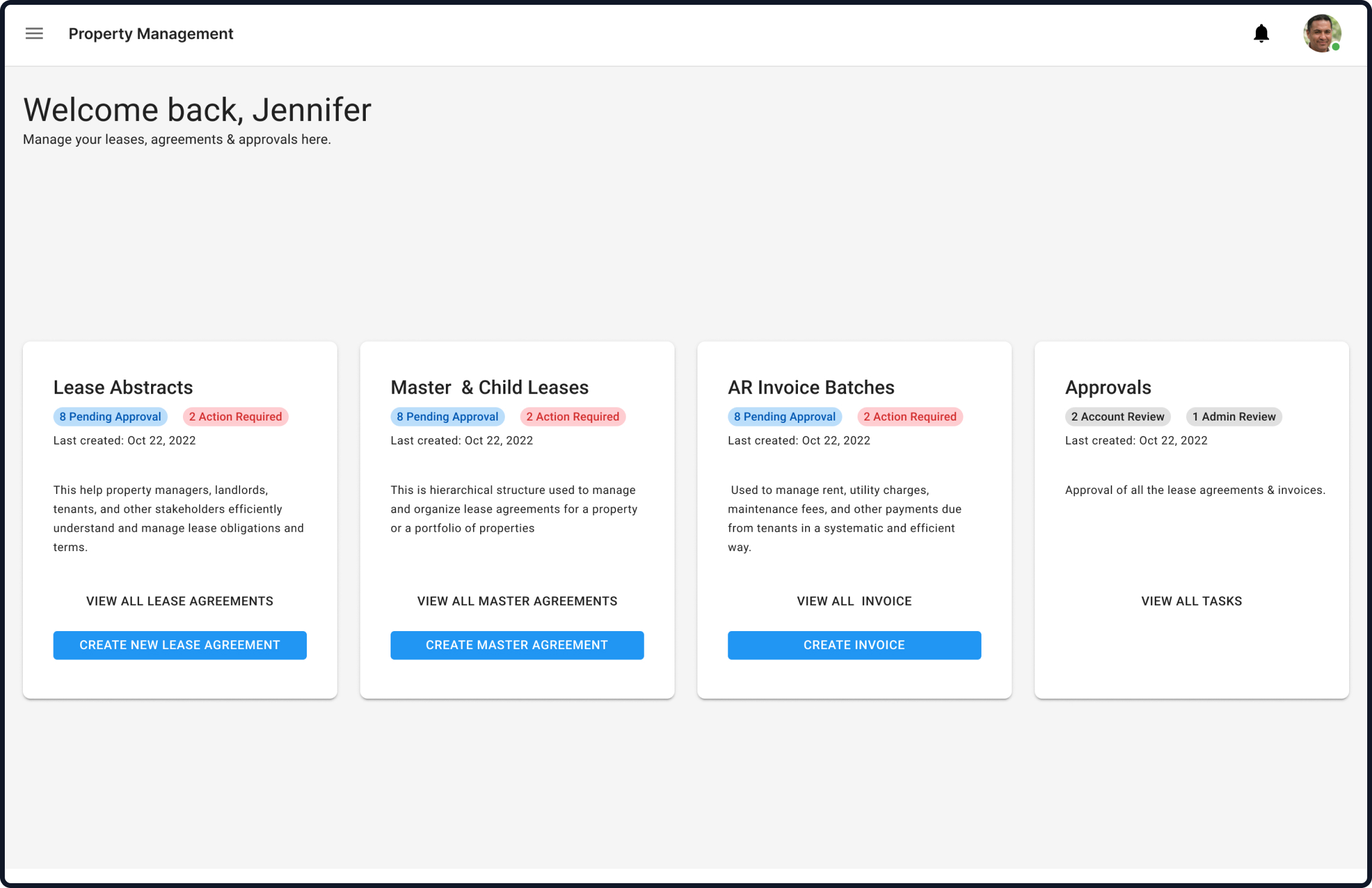
Project Overview
Walmart's real estate property management agents required a robust and user-friendly application to manage lease agreements efficiently. The goal was to enable seamless handling of master and child leases, tenant management, and senior-level reviews prior to submission. The application needed to cater to the unique workflows and hierarchical processes within Walmart’s property management division.
Problem Statement
Managing real estate properties for a retail giant like Walmart involves a high volume of lease agreements, including complex structures of master and child leases. The previous system was cumbersome, leading to inefficiencies in:
- Creating and reviewing leases.
- Handling hierarchical approvals.
- Maintaining tenant records and lease statuses.
Solution
Develop a property management application that:
- Allows agents to create new leases and link master agreements with child leases.
- Facilitates efficient tenant management, including data updates and communication tracking.
- Streamlines the review and approval process by integrating senior-level workflows before submission.
User Research
To ensure the application met user needs, a detailed user research process was undertaken.
Research Methods
- Stakeholder Interviews: Conducted one-on-one interviews with property management agents and senior reviewers to understand their workflows, pain points, and feature requests.
- Contextual Inquiries: Observed agents performing their daily tasks to identify challenges with the existing system.
- User Persona Development: Created detailed personas to represent key user groups, focusing on their goals, frustrations, and needs.
Empathy Mapping
Captured the thoughts, feelings, and actions of Property Agents and Senior Reviewers.
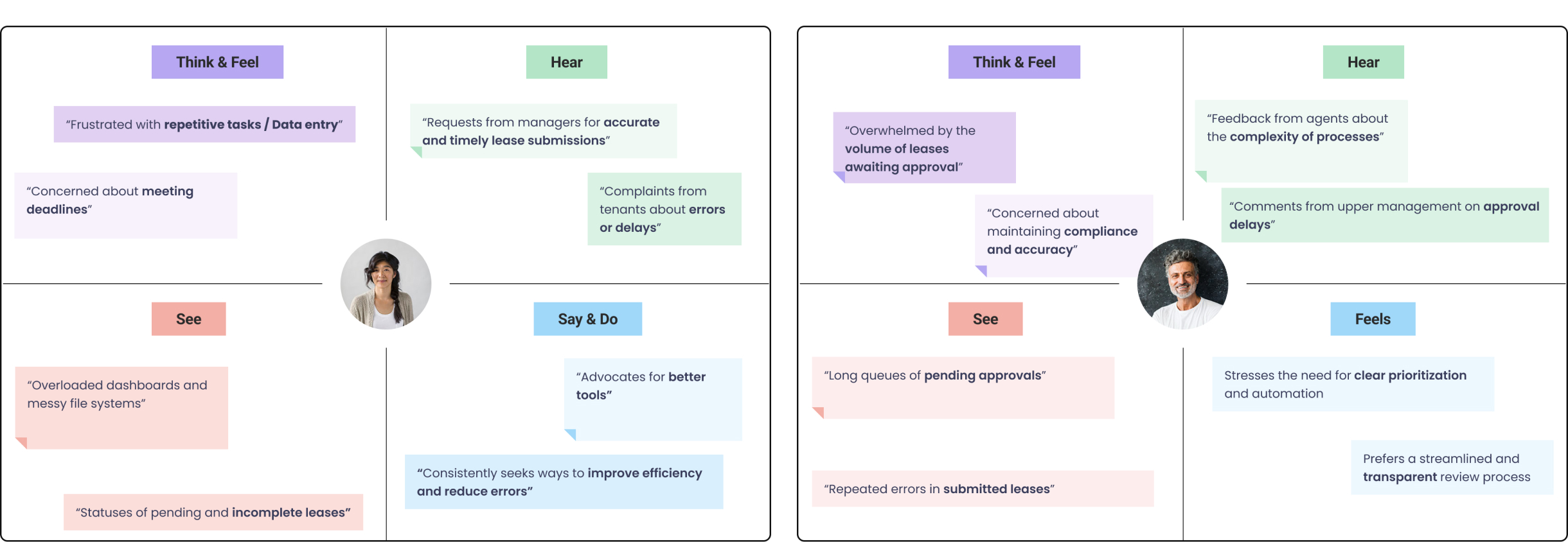
Personas
Detailed profiles representing primary user groups
- Manager Persona: High-level decision-maker focused on analytics and strategy.
- Supervisor Persona: Front-line leader needing real-time data and coaching tools.
- Agent Persona: Performance-oriented individual seeking feedback and motivation.

User Journey
Mapped the journeys for each user group

User Journey
High-Level IA Map
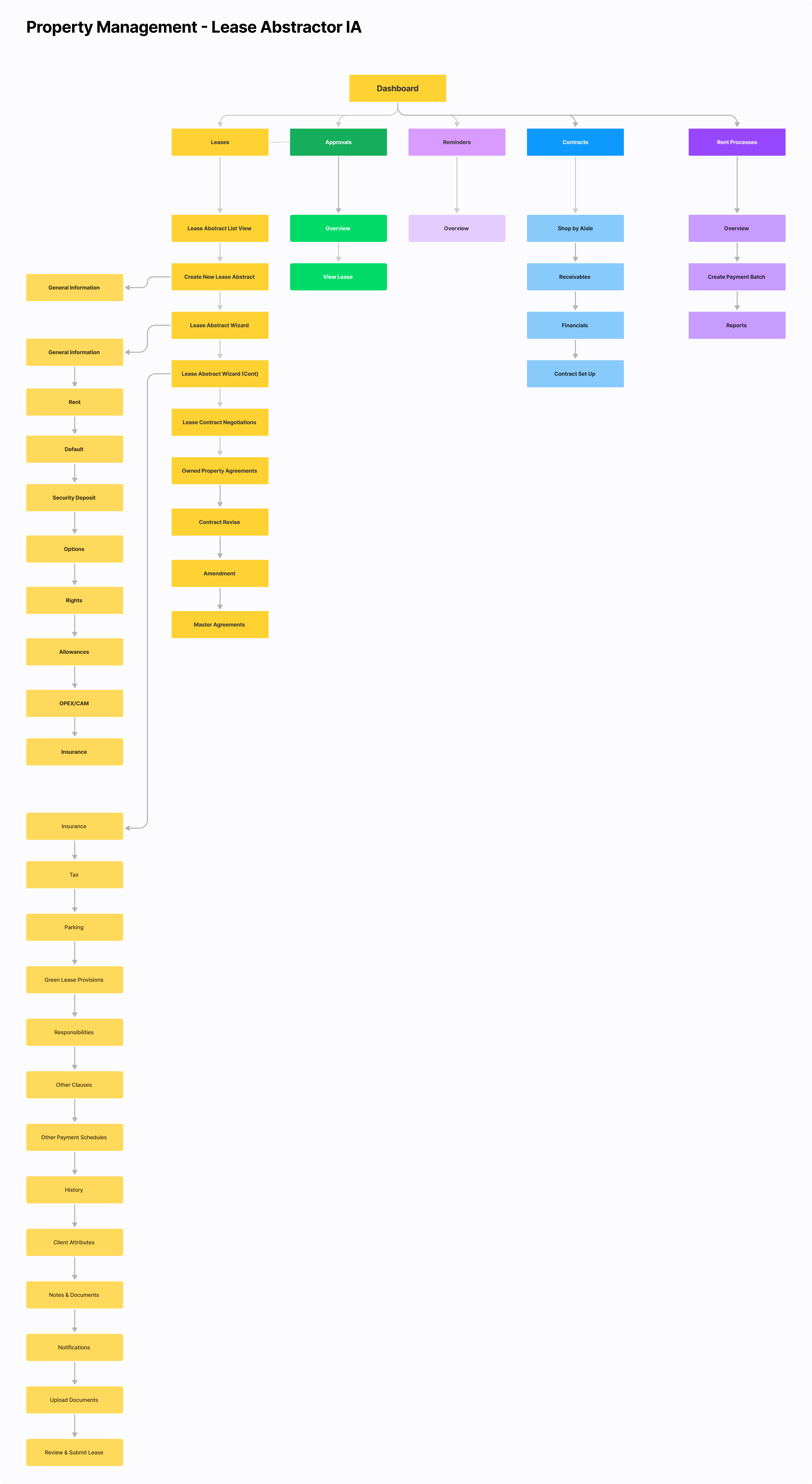
Design Phase
Wireframes
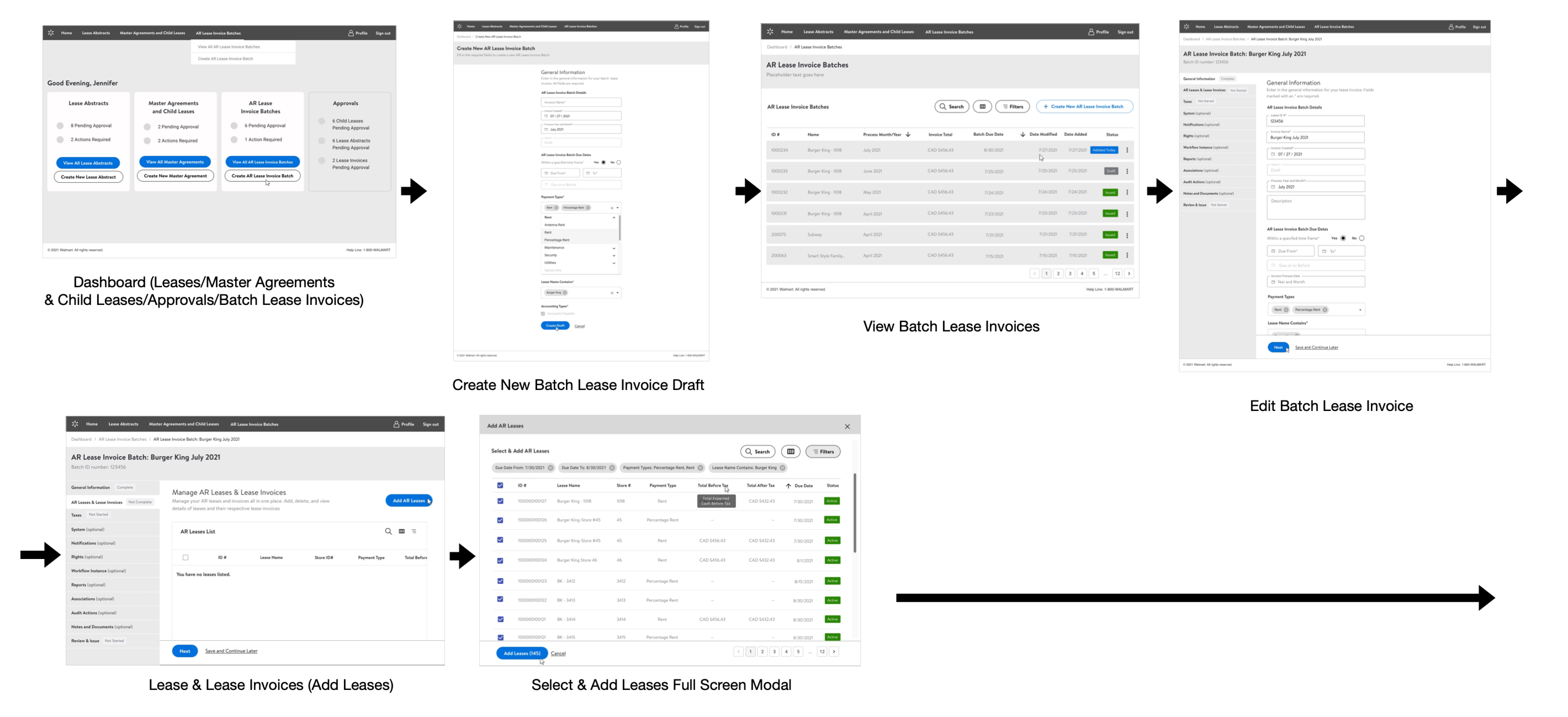
Final Design
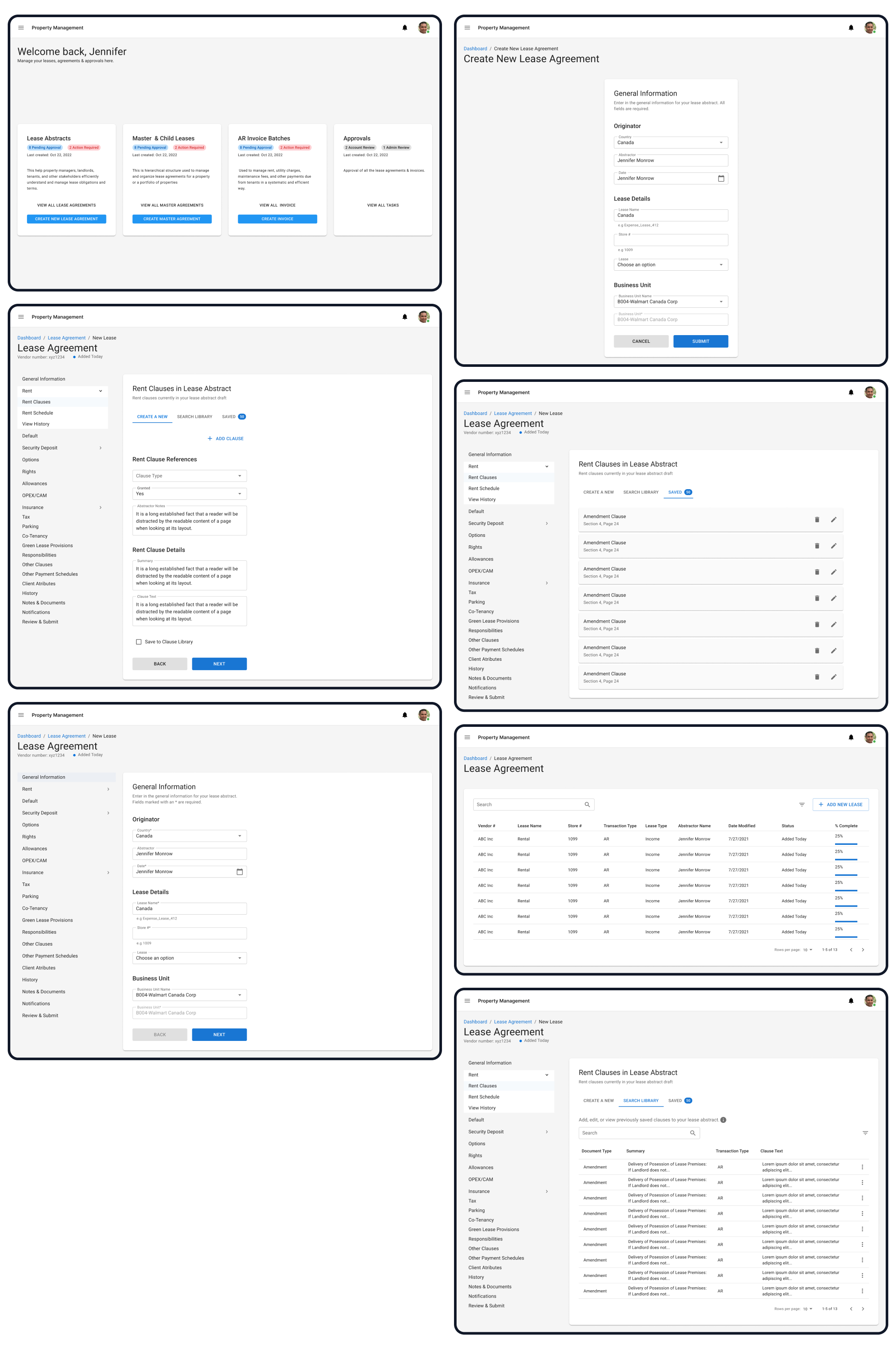
Usability Testing
Conducted testing with:
- 3 Managers
- 2 Supervisors
- 5 Agents
Findings
- Managers wanted customizable KPIs.
- Supervisors preferred real-time alerts for critical performance issues.
- Agents appreciated gamification but requested private feedback options.
Results
Key Outcomes
- 15% reduction in average handle time (AHT).
- 20% increase in customer satisfaction (CSAT).
- 30% less time spent on performance analysis by supervisors./li>
Qualitative Feedback
- Managers: "The customizable dashboards save so much time."
- Supervisors: "Real-time alerts make it easy to act quickly."
- Agents: "The gamification features are motivating and fun."
Learning and Next Steps
Key Learnings
- Implement predictive analytics to forecast trends.
- Real-time feedback fosters immediate improvement.
Next Steps
- Implement predictive analytics to forecast trends.
- Develop a mobile app for on-the-go monitoring.
- Add multilingual support for global teams.
- Expand integration with CRM and analytics tools.